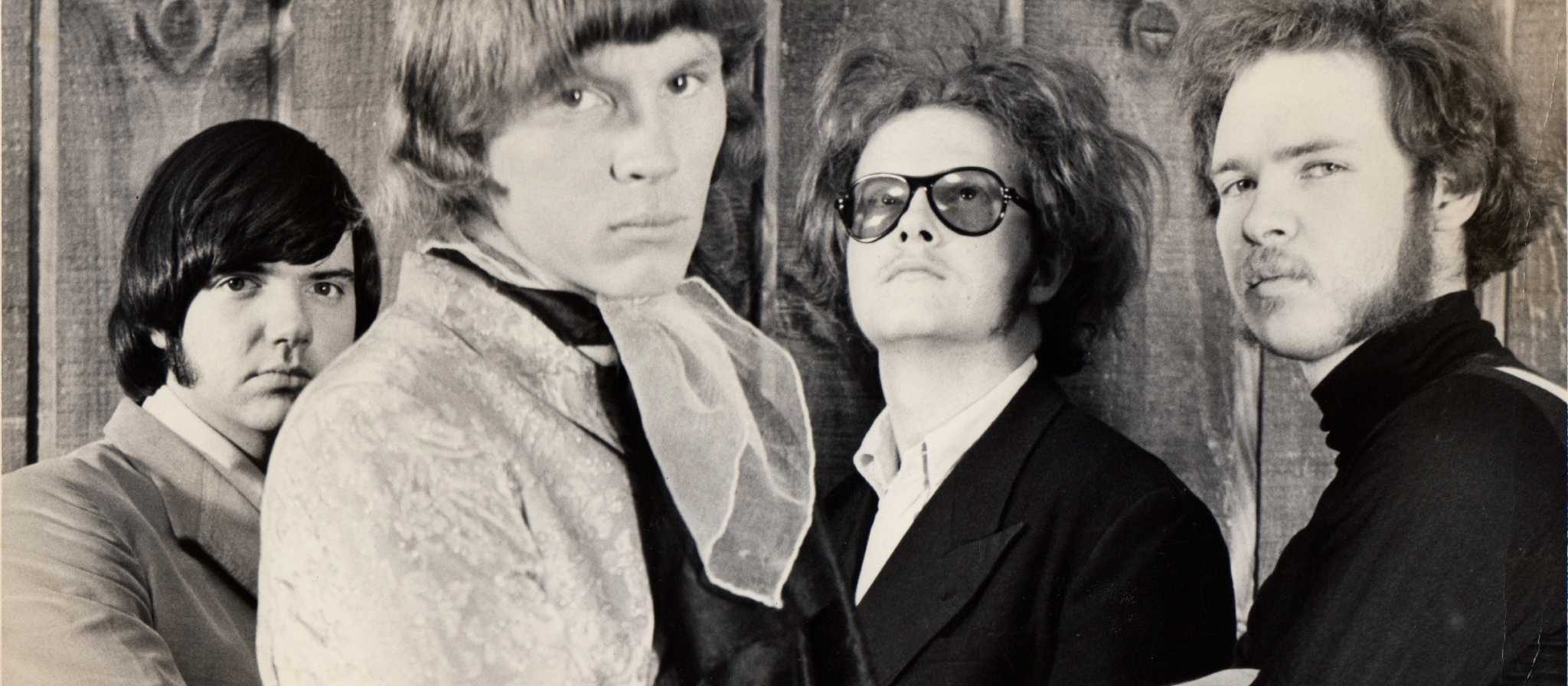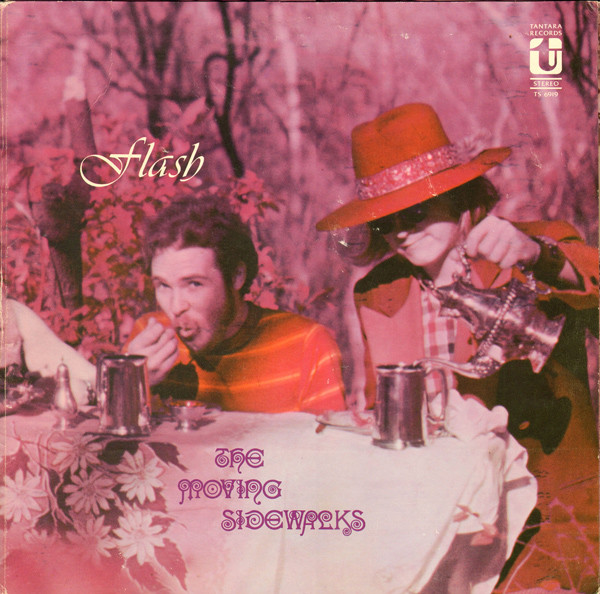

“But I’m so far gone I don’t even know my name.”
The Moving Sidewalks’ debut has unfortunately been relegated to the historical dustbin. This is a shame because it is a fantastic little diamond in the rough. Though the Houston, Texas band was short-lived, releasing only a single album, Flash more than earns its keep as a historical footnote in the annals of rock history. The main reason why the album has a small modicum of prominence is because it served as the breeding ground for Billy Gibbons, better known as the bearded riff master of ZZ Top. Recorded when the guitarist was not yet twenty years old, the songs on Flash range from fuzzy psychedelic and garage rock to dirty blues, with some questionable experimentation thrown in for good measure. What’s most apparent when listening to the album—and confirmed with photographic evidence and documented quotes from the icon himself—is that the young Billy Gibbons was heavily inspired by Jimi Hendrix. Historically speaking, the band is worth looking at for ZZ Top completionists. But if we remove ZZ Top from the discussion, The Moving Sidewalks are still worth some time because Flash (and its supplemental material) is not “just another psych rock album,” and the band wasn’t merely a springboard for Gibbons to launch the ZZ Top phenomenon; Flash is a very solid southern psych blues record in its own right.
Gibbons had been playing in bands since he was fourteen years old—first the Saints, then Billy G and the Ten Blue Flames, then the Coachmen. The Coachmen mostly played blues rock and popular hits from the day at high school dances and whatnot. When the countercultural psychedelic group The 13th Floor Elevators—fellow Texas natives—gained some popularity on the merits of their debut The Psychedelic Sounds of the 13th Floor Elevators, Gibbons decided to readjust his musical sights by forming The Moving Sidewalks. The newly formed group re-recorded the Coachmen’s most popular original tune, ‘99th Floor’, and it became a minor regional radio hit. The influence of the Elevators and their eccentric frontman Roky Erickson is apparent throughout the album, especially on opener ‘Flashback’—probably my favorite track on the album owing greatly to its sublime acoustic coda. But another, greater influence was yet to come for Gibbons.
On the merits of ‘99th Floor’ and follow-up single ‘Need Me’, the band was given the opportunity to open a handful of shows for The Jimi Hendrix Experience during their first American tour since becoming massively popular. The musicians bonded—Billy learned from Jimi (there’s a neat video from about ten years ago of elder statesman Gibbons telling the story of Hendrix teaching him how to play ‘Foxy Lady’ before ZZ Top launches into their own rendition of it) and Sidewalks’ drummer Dan Mitchell—who also briefly manned the drum kit for the original ZZ top lineup—spent some time with ace percussionist Mitch Mitchell. Now, many guitarists took and still take inspiration from Hendrix, but most don’t match his creativity and skill level. I don’t think Gibbons does, either, but he does a decent job of mimicking the master on a few tracks. And he was like seventeen, so let’s cut him some slack. ‘Pluto – Sept. 31st’ sounds very much like ‘Fire’ from Are You Experienced in both rhythm and vocal styling. That’s the most obviously derivative piece, while other tracks such as ‘You Make Me Shake’, ‘Scoun Da Be’, and ‘Crimson Witch’ merely borrow certain elements.
After the shows with Hendrix, The Moving Sidewalks began to tour with The Doors, but early on they accidentally set that band’s equipment on fire during a pyrotechnic display and so ended up out of a job. Further compounding that crucial mistake was that their third proposed single was a cover of a Beatles’ song. Their label turned it down, preferring original material, and Tom Moore and Don Summers (bassist and keyboardist, respectively) were drafted into the Army. The band disintegrated before their debut even released.
Removed from the context, though, Flash is a pretty decent project. In addition to what’s already been discussed, there’s also some late-60s psychedelic goofiness—the kind of stuff that The Beatles and The Rolling Stones pulled off on Sgt. Pepper’s Lonely Hearts Club Band and Their Satanic Majesties Request. So we’ve got musical breakdowns, reverb/echoing laughter, backwards guitar solos, etc. For the most part, this experimentation is pleasant and fits very well with the psychedelic sheen that envelopes these songs. But, crucially and unfortunately, the album ends with a one-two punch of weak sound collages that don’t really amount to anything.
It’s no wonder Flash didn’t launch the band into stardom. For starters, despite its reputation as psychedelic rock, it actually has a very garage rock and/or proto-punk vibe to it, a fad that was only in vogue for a few short years that came and went before Flash was released. And though Gibbons would become a star in short order by writing heavy riffs and growling raunchy lyrics, the closest we get to the ZZ Top sound on this album is the relatively tame ‘Joe Blues’.
Flash is worthy of a spin or two for fans of ZZ Top, fans of Hendrix, or those interested in the history of rock and roll and the tracing of musical lineages. It’s not some lost masterpiece, but its an entertaining peek at the origins of a future rock god.
Favorite Tracks: Flashback; Pluto – Sept. 31st; Crimson Witch.
Sources:
Ward, Ed. “The Moving Sidewalks: Where The British Invasion Met Texas Blues”. National Public Radio. 13 March 2013.